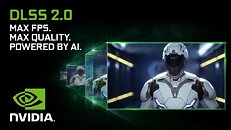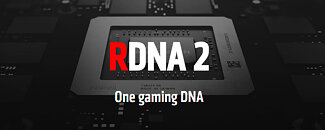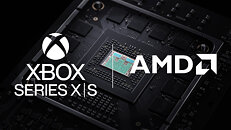
Microsoft DirectX Team to Introduce "DirectSR" at GDC 2024
According to a Game Developers Conference (GDC) 2024 schedule page, Microsoft is planning to present next-gen technologies with their upcoming "DirectX State of the Union Ft. Work Graphs and Introducing DirectSR" presentation. Shawn Hargreaves, Direct3D's Development Manager and Austin Kinross (PIX Developer Lead, Microsoft) are scheduled to discuss matters with representatives from NVIDIA and AMD. Wessam Bahnassi, a "20-year veteran in 3D engine design and optimization," is Team Green's Principal Engineer of Developer Technology. Rob Martin, a Fellow Software Engineer, will be representing all things Team Red—where he leads development on implementations for GPU Work Graphs. According to GDC, the intended audience will be: "graphics developers or technical directors from game studios or engine companies."
Earlier this month, an "Automatic super resolution" feature was discovered in Windows 11 Insider Preview build (24H2)—the captioned part stated: "use AI to make supported games play more smoothly with enhanced details," although further interface options granted usage in desktop applications as well. Initial analysis and user impressions indicated that Microsoft engineers had created a proprietary model, separate from familiar technologies: NVIDIA DLSS, AMD FSR and Intel XeSS. It is interesting to note that Team Blue is not participating in the upcoming March 21 "DirectX State of the Union" panel discussion (a sponsored session). GDC's event description states (in full): "The DirectX team will showcase the latest updates, demos, and best practices for game development with key partners from AMD and NVIDIA. Work graphs are the newest way to take full advantage of GPU hardware and parallelize workloads. Microsoft will provide a preview into DirectSR, making it easier than ever for game devs to scale super resolution support across Windows devices. Finally, dive into the latest tooling updates for PIX."
Earlier this month, an "Automatic super resolution" feature was discovered in Windows 11 Insider Preview build (24H2)—the captioned part stated: "use AI to make supported games play more smoothly with enhanced details," although further interface options granted usage in desktop applications as well. Initial analysis and user impressions indicated that Microsoft engineers had created a proprietary model, separate from familiar technologies: NVIDIA DLSS, AMD FSR and Intel XeSS. It is interesting to note that Team Blue is not participating in the upcoming March 21 "DirectX State of the Union" panel discussion (a sponsored session). GDC's event description states (in full): "The DirectX team will showcase the latest updates, demos, and best practices for game development with key partners from AMD and NVIDIA. Work graphs are the newest way to take full advantage of GPU hardware and parallelize workloads. Microsoft will provide a preview into DirectSR, making it easier than ever for game devs to scale super resolution support across Windows devices. Finally, dive into the latest tooling updates for PIX."






















































